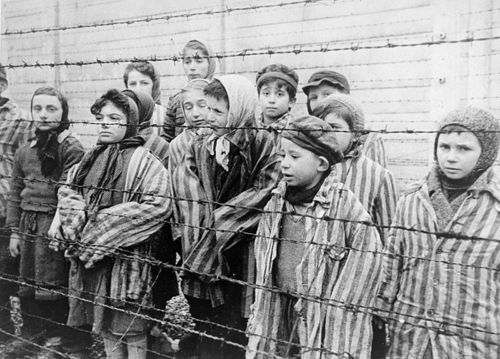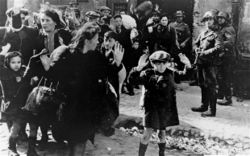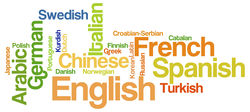Difference between revisions of "Category:Holocaust Children Studies--1940s"
| Line 68: | Line 68: | ||
* Boaz Cohen. "[https://cwg1945.org/wp-content/uploads/2018/11/Boaz-Cohen-childrens-voice.pdf The Children’s Voice: Postwar Collection of Testimonies from Child Survivors of the Holocaust]." ''Holocaust and Genocide Studies'' 21. 1 (Spring 2007): 73–95. | * Boaz Cohen. "[https://cwg1945.org/wp-content/uploads/2018/11/Boaz-Cohen-childrens-voice.pdf The Children’s Voice: Postwar Collection of Testimonies from Child Survivors of the Holocaust]." ''Holocaust and Genocide Studies'' 21. 1 (Spring 2007): 73–95. | ||
== Title == | == Title == | ||
Revision as of 07:16, 22 February 2022
|
|
Holocaust Children Studies : 2020s -- 2010s -- 2000s -- 1990s -- 1980s -- 1970s -- 1960s -- 1950s -- 1940s -- 1930s -- Home General : 2020s -- 2010s -- 2000s -- 1990s -- 1980s -- 1970s -- 1960s -- 1950s -- 1940s -- 1930s -- 1920s -- 1910s -- 1900s -- 1850s -- 1800s -- 1700s -- 1600s -- 1500s -- 1450s -- Medieval -- Home
|
Bibliography
- Boaz Cohen. Representing Children's Holocaust
- Boaz Cohen. "The Children’s Voice: Postwar Collection of Testimonies from Child Survivors of the Holocaust." Holocaust and Genocide Studies 21. 1 (Spring 2007): 73–95.
Title
{pl} Michał M. Borwicz - Nella Rost - Jo´zef Wulf, eds. Dokumenty zbrodni i me˛czen´stwa. Cracow [Poland]: Wojewo´dzka Z˙ ydowska Komisja, 1945.
Abstract
"Attempts to publicize children’s testimonies began as early as 1945 with the publication of the collection Dokumenty zbrodni i me˛czen´stwa (Documents of Crime and Martyrdom) by the Regional Jewish Historical Commission in Krakow. One of its four chapters was devoted to “children’s stories” and contained excerpts from twenty-two testimonies. Fifty-three pages of the book were devoted to children, the “Enemy No. 1 of the Fascists.” The Krakow commission’s special interest in children’s testimonies can be traced to the work of Maria (Miryam) HochbergMarian´ska, who survived the war living outside the ghetto “on Aryan papers” (that is, using false identity documents indicating that she was not Jewish). She was active in Z˙egota, the Polish underground organization for assistance to Jews, and cared for a number of women who went into hiding with their children. Thus, she had firsthand knowledge of the special needs of children during the occupation."--Boas Cohen, Bar-Ilan University.
1947
- Benjamin Tennebaum, ed., Ehad me-ir u shenayim mi-mishpahah: Mivhar m’elef autobigrafiot shel yaldei Yisrael b’Polin [One of a City and Two of a Family: A Selection from a Thousand Autobiographies of Jewish Children in Poland] (Merhavyah, Israel: Sifriat Poalim, 1947) <Hebrew>.
Media in category "Holocaust Children Studies--1940s"
The following 18 files are in this category, out of 18 total.
- 1942 Pichel (film).jpg 235 × 355; 50 KB
- 1943 Krása opera.jpg 440 × 627; 164 KB
- 1944 Gerron (doc).jpg 190 × 281; 8 KB
- 1945 Berg.jpg 334 × 499; 41 KB
- 1945 Borwicz - Rost - Wulf.jpg 187 × 270; 10 KB
- 1946 Asscher.jpg 181 × 279; 9 KB
- 1946 Berg it.jpg 260 × 346; 17 KB
- 1946 Kaplan.jpg 187 × 269; 7 KB
- 1947 Frank.jpg 250 × 383; 49 KB
- 1947 Grüss.jpg 188 × 268; 13 KB
- 1947 Hochberg - Grüss.jpg 128 × 184; 3 KB
- 1947 OSE.jpg 1,200 × 1,635; 355 KB
- 1947 Tenenbaum.jpg 650 × 907; 119 KB
- 1948 Ford (film).jpg 440 × 617; 67 KB
- 1948 Gross film.jpg 209 × 288; 23 KB
- 1948 Heyman.jpg 318 × 462; 50 KB
- 1948 Küchler-Silberman.jpg 503 × 678; 209 KB
- 1948 Zinnemann film.jpg 245 × 445; 28 KB




















